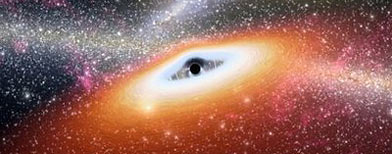Scientific Minds Want To Know

Image credit: Neddy's Palaver
Legends abound about the Archimedes "death ray", constructed from giant mirrors, which he allegedly used during the siege of Syracuse in 212 BC to set Roman ships ablaze. Now Green Power Science—the folks who brought us videos on flash cooking eggs with a Fresnel lens, building your own solar space heater with discarded campaign signs and, most recently (to mixed reviews), how to build a solar shower—have set out to see whether the concept really works. So they decided to take on some pirates. Article continues: Archimedes' "Death Ray" Really Works. On Pirates. (Video)
Giant woolly mammoths died out because they ran out of grass - not because they were hunted to extinction, according to scientists.

The mammoth was three meters high, with thick hair to help it cope with the cold
From Amusing Planet:
The Megaliths of Great Britain
A megalithic monument, in archaeology, is a construction involving one or several roughly hewn stone slabs of great size; it is usually of prehistoric antiquity. These monuments are found in various parts of the world, but the best known and most numerous are concentrated in Western Europe, including Brittany, the British Isles, Iberia, South France, South Scandinavia, and North Germany, the highest concentration being at Great Britain. Scotland, England, Ireland and Wales together accounts for hundreds of megalith and stone circle sites. Here is a collection of some of the more popular ones.


Image of Meiolania platyceps, a relative of the newly discovered species, by Australian National Museum via Wired.
Hollywood isn't the only place where people and prehistoric creatures met: Just 3,000 years ago (a relative blink of an eye), humans on the small Pacific island of Vanuatu were still encountering half-ton turtles with armored club tails and horned heads, a species until recently thought to have gone extinct 50,000 years in the past. Things didn't go well for the turtles from there.Article continues: Monster Turtle Species That Survived 50,000 Years Lasted Just 200 Years After It Met Humans

What you see here are coprolites—a fancy name for fossilized poops, which allows paleontologists to seriously discuss something that could otherwise end up eliciting a lot of immature giggles. Notice, if you will, the giant teeth marks in the coprolite on the left. Those were likely made by either a Physogaleus or a Galeocerdo, ancient, extinct sharks related to the modern Tiger Shark.
And, while it's pretty awesome that paleontologists can match tooth marks well enough to fossil anatomy to narrow the biter down to one of two species, the real thing we all want to know is, "Why the heck was a shark biting poop?"
Tiger Sharks have not been documented as poop-eaters. Plus, if the ancient sharks were trying to eat poop, you'd think they'd have succeeded. Instead, we have coporolites—un-eaten, but still bitten. It's a mystery. But, according to science blogger Brian Switek, researchers from Maryland's Calvert Marine Museum and the American Institutes for Research, have a theory. An awesome theory.
The pattern of the bite marks and the fact that the feces were not ingested is consistent with a reconstruction in which, during an attack on another animal, the shark either bit through the body wall and guts to leave the tooth impressions or bit the intestines after disemboweling its prey. Such an attack would have left tooth marks on the feces, which probably fell out of the intestine shortly afterward, hence "In this scenario, the shark chose not to eat the feces, which drifted away, settled out of sight, or otherwise avoided attention."Image from "Shark-bitten vertebrate coprolites from the Miocene of Maryland" in the journal Naturwissenschaften

One of the galaxy's few "magnetars" challenges a core assumption about black holes.
Also: 
No comments:
Post a Comment